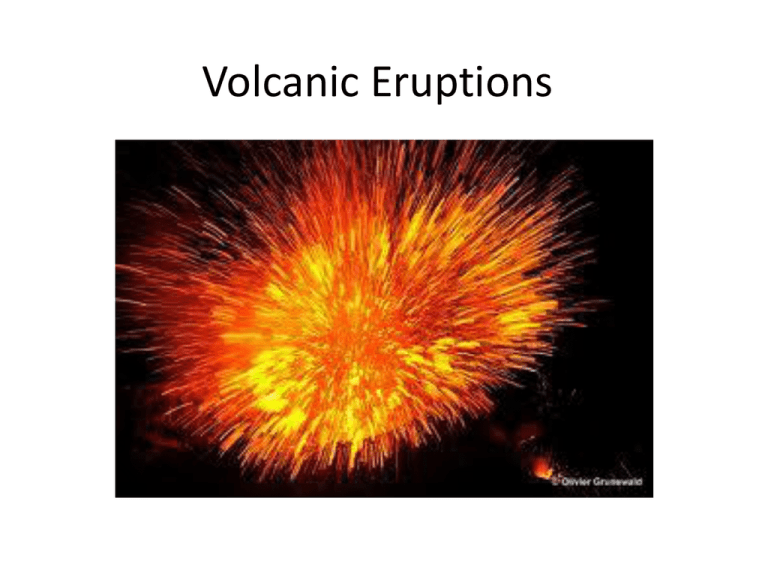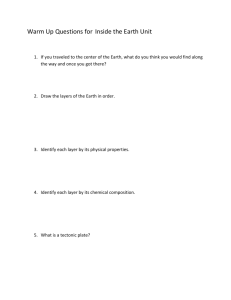Volcanic Eruptions
advertisement

Volcanic Eruptions • Hawaii – many myths about Pele, the fire goddess of volcanoes • Pele lives in the depths of Hawaii’s erupting volcanoes • When Pele is angry, she causes a volcanic eruption • Pele’s hair type of volcanic rock • As lava stretches and hardens into thin strands Magma Reaches Earth’s Surface • Inside a volcano • Magma chamber – beneath a volcano, magma collects in a pocket • Magma moves upward through a pipe • Molten rock and gas leave the volcano through an opening called vent, at the top of the volcano • Vents can form on the side of the volcano • Lava flow an area covered by lava as it pours out of a vent • Crater is a bowl-shaped area that may form at the top of the volcano around the central vent A Volcanic Eruption • The carbon dioxide in the magma expands and forms bubbles, which rush to the surface, these dissolved gases are under pressure • When a volcano erupts, the force of the expanding gases pushes magma from the magma chamber through the pipe until it flows or explodes out the vent. Kinds of Volcanic Eruptions • Quiet Eruptions – low in silica • Low silica – magma has low viscosity and flows easily • Lava flows easily from the vent, and flows for many kilometers, can produce both pahoehoe and aa • Explosive Eruptions – magma high in silica, high viscosity magma is thick and sticky • High viscosity magma builds up in the volcano’s pipe, gases build up pressure until they explode. • Pebble-size particles are called cinders • Large pieces are called bombs (baseball to car size) • Pyroclastic flow occurs when an explosive eruption hurls out a mixture of hot gasses, ash, cinders , and bombs • Obsidian forms when lava cools very quickly, giving it a smooth, glossy surface like glass • Pumice forms when gas bubbles are trapped in fast cooling lava, leaving spaces in the rock • Volcano Hazards • Quiet Eruption, lava flows setting fire and burying anything in its path, can cover large areas with thick layers of lava • Explosive Eruptions puts out hot clouds of deadly gases, ash, cinder, and bombs. • Ash can bury entire towns • If ash becomes wet, becomes heavy and collapse roofs • Planes can suck in ash and make the engines stall • Cause landslides, avalanches of mud, melt snow and rock Stages of Volcanic Activity • Volcanoes can last from less than a decade to more than 10 million years • Active, (alive) volcano is one that is erupting or has shown signs that it may erupt in the near future • Dormant volcano may awaken in the future and become active • Extinct (dead) unlikely to erupt again








